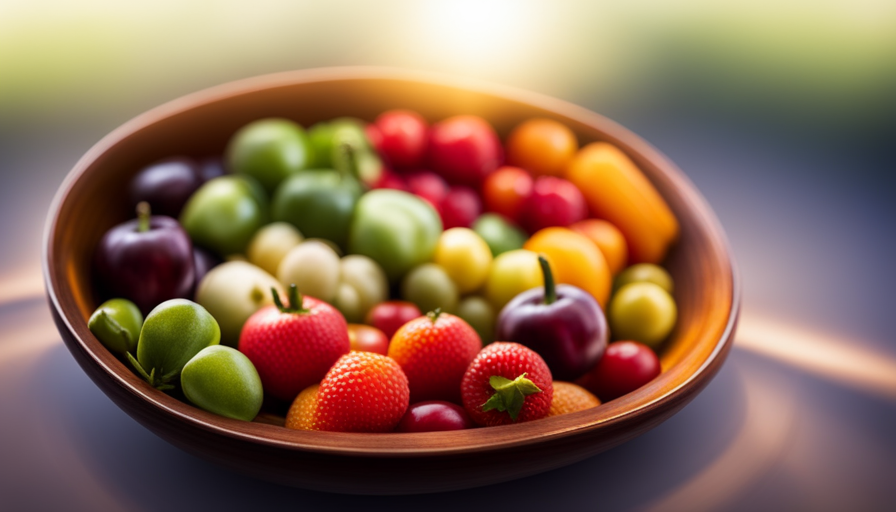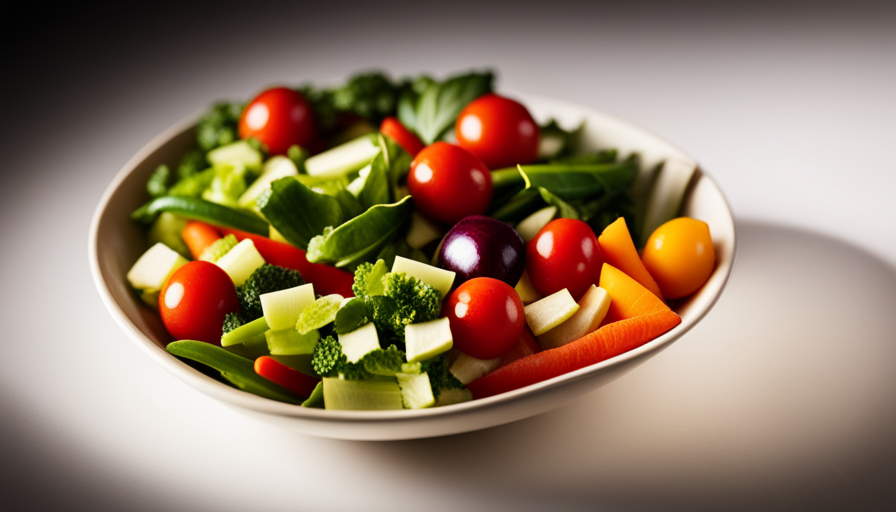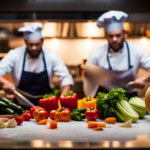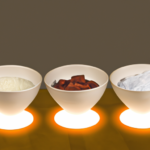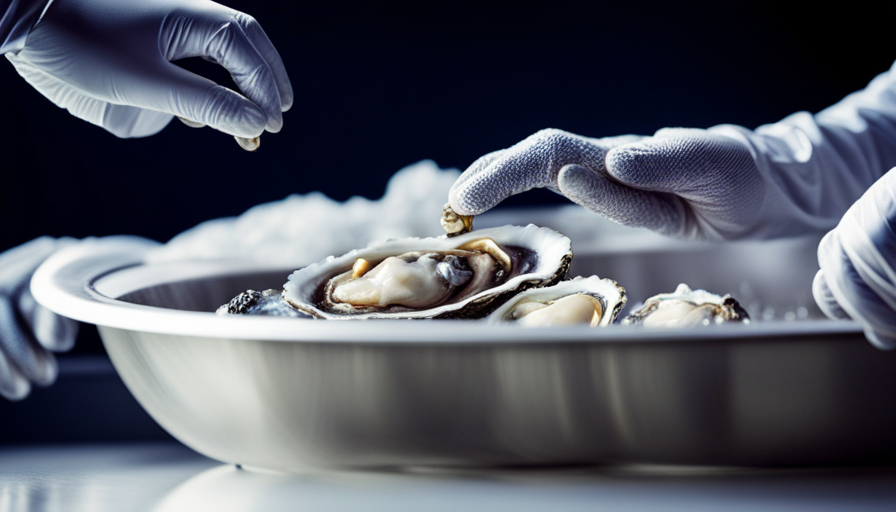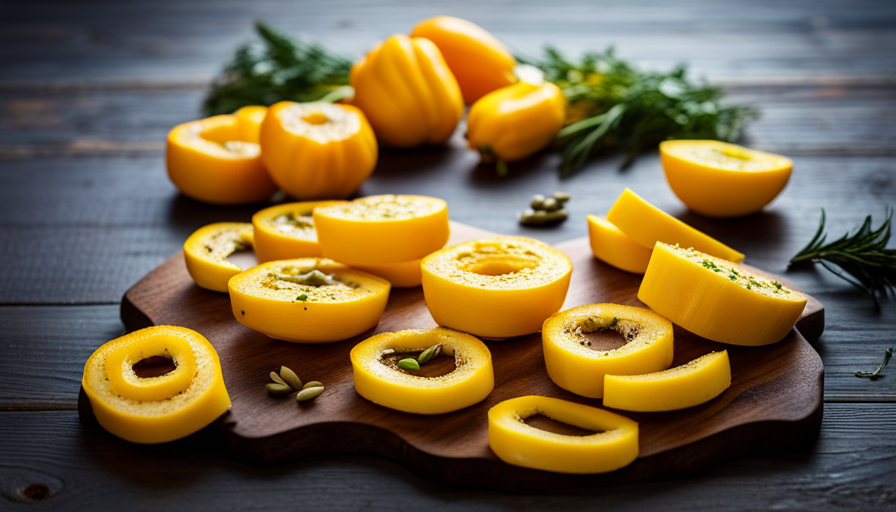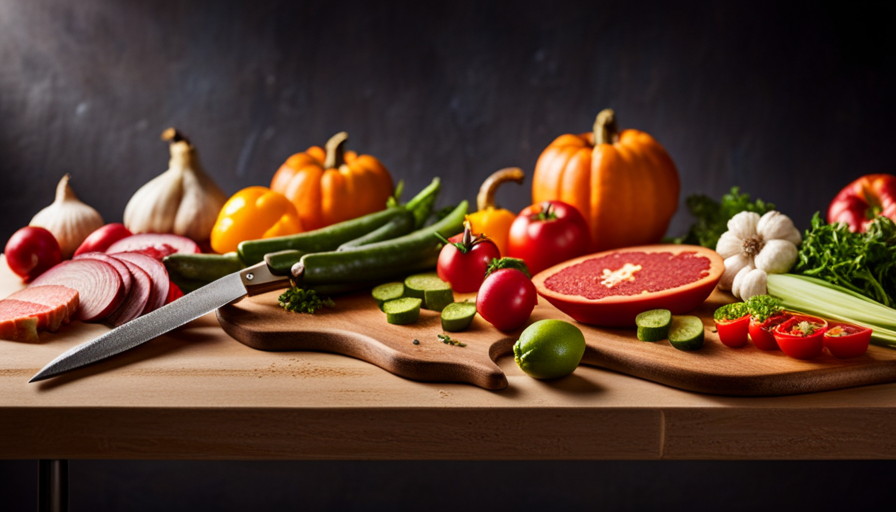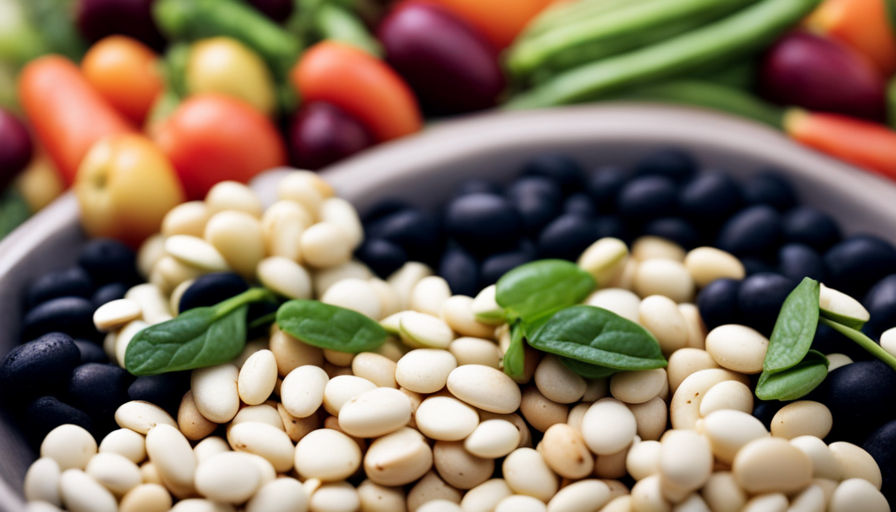Just like the skill required to walk a tightrope, mastering the art of raw food preparation involves a delicate balance of preserving the natural flavors of the ingredients while satisfying our desire for comforting nourishment.
It’s a tightrope many chefs and culinary enthusiasts strive to walk, as they seek to warm raw food without crossing the line into cooking.
The question remains: how warm can you make raw food without cooking it?
In this article, we will delve into the intricacies of temperature control in raw food, exploring gentle warming techniques and innovative methods to achieve just the right amount of warmth while maintaining its rawness.
Through proper temperature management, you can enhance the nutritional value of your dishes, taking your raw culinary skills to new heights.
So tighten your apron, grab your thermometer, and let’s embark on this journey to discover the perfect balance between warmth and rawness.
Key Takeaways
- Raw food refers to food not heated above 104°F (40°C)
- Gentle heating techniques like dehydrating, water baths, and sous vide can warm raw food without cooking it
- Proper temperature control is important for preserving freshness, colors, flavors, and textures of raw food
- Enzymes in raw food are crucial for digestion and overall health, and gentle warming techniques preserve these enzymes while enhancing taste and texture.
Understanding the Concept of Raw Food
You won’t believe the incredible health benefits you can unlock by understanding the concept of raw food. Contrary to popular misconceptions, raw food does not necessarily mean eating food that’s cold or completely uncooked. Raw food refers to food that isn’t heated above a certain temperature, typically around 104°F (40°C).
This temperature threshold ensures that the food retains its natural enzymes, vitamins, and minerals, which can be lost during the cooking process.
One of the main benefits of a raw food diet is the abundance of nutrients it provides. Raw fruits, vegetables, nuts, and seeds are rich in vitamins, minerals, and antioxidants. These nutrients are essential for maintaining a healthy immune system, promoting good digestion, and reducing the risk of chronic diseases such as heart disease and certain types of cancer.
Another advantage of a raw food diet is the increased intake of dietary fiber. Raw fruits and vegetables are high in fiber, which aids in digestion, regulates blood sugar levels, and promotes a feeling of fullness, ultimately supporting weight management.
Moreover, raw food enthusiasts claim that eating raw foods can improve energy levels, enhance skin health, and support detoxification processes in the body. However, it’s important to note that a raw food diet may not be suitable for everyone, and consulting with a healthcare professional is recommended before making any drastic dietary changes.
Understanding the concept of raw food can unlock numerous health benefits. By dispelling the misconceptions surrounding raw food and embracing its advantages, individuals can enjoy a nutrient-dense diet that promotes overall well-being.
The Importance of Temperature Control in Raw Food
Ensure proper temperature control to preserve the freshness and nutritional value of uncooked ingredients. When it comes to raw food, temperature control is of utmost importance. Gentle heat methods can be used to warm raw food without cooking it, but it’s crucial to keep the temperature below a certain threshold to maintain the integrity of the ingredients.
To better understand the significance of temperature control in raw food, consider the following:
-
Delicate enzymes: Raw food contains temperature-sensitive enzymes that are easily destroyed by high heat. By keeping the temperature low, you can retain these enzymes, which contribute to the nutritional value and digestive benefits of the food.
-
Freshness preservation: Proper temperature control helps to maintain the freshness of raw ingredients. It prevents the growth of harmful bacteria while preserving the vibrant colors, flavors, and textures of the food.
-
Texture maintenance: By using gentle heat methods, you can warm raw food without compromising its texture. This is particularly important for dishes like soups or sauces, where a slight increase in temperature can enhance the overall experience.
-
Nutrient retention: Heating raw food too much can cause the loss of essential nutrients. By controlling the temperature, you can minimize nutrient loss and ensure the food remains as nutritious as possible.
-
Taste enhancement: Gentle heating can bring out subtle flavors in raw ingredients, enhancing the overall taste of the dish. It allows for a balance between warmth and freshness, creating a unique culinary experience.
By understanding the importance of temperature control and utilizing gentle heat methods, you can warm raw food without cooking it and preserve its freshness, nutritional value, and delightful flavors.
Gentle Warming Techniques for Raw Food
To gently warm your uncooked ingredients while preserving their integrity, consider utilizing gentle heating techniques. These methods allow you to elevate the temperature of your raw food without actually cooking it.
Gentle warming techniques are particularly useful when you want to maintain the rawness of your ingredients while adding a touch of warmth to enhance flavors or textures. One popular technique is using a dehydrator. This appliance gently warms the food by circulating warm air around it without exceeding temperatures that would be considered cooking. By setting the dehydrator to a low temperature, usually around 115°F (46°C), you can warm your raw ingredients without compromising their raw state.
Another method is using a water bath. This involves placing your food in a sealed bag or container and immersing it in warm water. The water should be kept at a temperature below 118°F (48°C) to ensure the food remains raw. This gentle warming technique is commonly used for preparing raw soups or sauces, as it allows the flavors to meld together while maintaining the nutritional integrity of the ingredients.
By employing these gentle warming techniques, you can elevate the temperature of your raw food without cooking it, preserving the rawness and all the beneficial nutrients that come with it.
Exploring Innovative Methods of Warming Raw Ingredients
Using innovative methods like sous vide cooking, it’s possible to gently heat raw ingredients to enhance their flavors and textures without compromising their nutritional value.
For example, imagine marinating a tender piece of raw steak in a vacuum-sealed bag with spices and herbs, then cooking it in a water bath at a precise temperature for several hours. This results in a perfectly juicy and flavorful steak that is still considered raw.
Sous vide cooking is just one example of an innovative warming method that allows for the preservation of raw ingredients.
Another innovative method is using a dehydrator to warm raw ingredients. Dehydrators use low temperatures and circulating air to slowly remove moisture from food, effectively warming it while preserving its raw state. This method is particularly useful for warming fruits, vegetables, and nuts, as it enhances their natural flavors and textures without subjecting them to high heat.
Furthermore, induction heating is a cutting-edge technique that can warm raw ingredients without cooking them. Induction heating works by generating heat directly in the cooking vessel through electromagnetic fields. This method allows for precise temperature control and evenly distributes heat, resulting in gently warmed raw ingredients that retain their nutritional value and natural properties.
Innovative warming methods such as sous vide cooking, dehydrating, and induction heating offer ways to warm raw ingredients while preserving their raw state. These techniques enhance flavors and textures without compromising nutritional value, providing a range of options for those who prefer their food to be warm but not cooked.
Maintaining Rawness while Achieving Warmth
By employing these innovative warming techniques, you can savor the delightful sensation of the raw ingredients gently embracing warmth while retaining their natural essence.
Gentle warming techniques are crucial when dealing with temperature-sensitive ingredients to avoid altering their rawness. One effective method is low-temperature cooking, which allows you to warm the food without actually cooking it. By using a sous vide machine, you can set the temperature to a precise degree and immerse the raw ingredients in a water bath. This method ensures that the food reaches the desired warmth without going above the ideal temperature for rawness.
Another technique is using warm water baths or heating pads to slowly warm the ingredients. These methods are particularly useful for delicate ingredients like fruits, vegetables, and seafood, which can easily lose their raw quality if exposed to high temperatures.
Additionally, using heat lamps or infrared lights can warm the surface of the food without affecting its internal rawness. These techniques provide a balance between warmth and rawness, allowing you to enjoy the best of both worlds.
So, next time you want to warm your raw ingredients, remember to employ these gentle warming techniques to maintain their natural essence.
Experimenting with Flavors in Raw Cuisine
Let your taste buds embark on a flavor-filled adventure as you explore the world of raw cuisine. Raw food doesn’t have to be bland or boring; in fact, it can be bursting with exciting and unique flavors. One key aspect of raw cuisine is flavor balancing, where different tastes and textures are combined to create a harmonious and satisfying dish.
To achieve flavor balancing, raw chefs use a variety of techniques and ingredients. For example, they may incorporate acidic elements like citrus juices or vinegars to add brightness and tanginess to a dish. Sweetness can be achieved by using naturally sweet ingredients like fruits or raw honey. Savory flavors can be enhanced with the use of ingredients like miso paste or tamari sauce.
In addition to flavor balancing, creative plating is another important aspect of raw cuisine. Raw chefs not only focus on taste but also on the visual presentation of the dish. They use techniques like layering, garnishing, and intricate arrangements to make the dish visually appealing and appetizing.
To give you a better understanding of how flavor balancing and creative plating work together in raw cuisine, here is a table showcasing some examples:
| Flavor Balancing | Creative Plating |
|---|---|
| Sweet and tangy | Colorful fruit salad |
| Creamy and savory | Zucchini noodles with avocado pesto |
| Spicy and refreshing | Cucumber and jalapeno gazpacho |
By incorporating flavor balancing and creative plating techniques, raw cuisine offers a unique and exciting culinary experience. So, get ready to tantalize your taste buds and impress your guests with the delicious and visually appealing dishes of raw cuisine.
Tips for Perfectly Warming Raw Food
Embrace the delectable flavors of raw cuisine by learning the art of perfectly warming your dishes without traditional cooking methods. Explore alternative heating methods to maximize flavor in raw dishes while maintaining ingredient integrity. Follow these tips to achieve perfectly warmed raw food:
-
Dehydrator: Utilize a dehydrator to warm your raw dishes. Set the temperature between 105°F (40°C) and 118°F (48°C) to gently warm the food without cooking it. This method ensures that the enzymes and nutrients remain intact while enhancing flavors.
-
Warm Water Bath: Create a warm water bath to heat your raw dishes. Fill a basin or sink with warm water, around 100°F (38°C), and place your dish in a sealed container. Submerge the container in the warm water for gentle and even heating without losing vital nutrients.
-
Warm Air Circulation: Use warm air circulation to warm your raw food. Place your dish near a source of warm air, such as a radiator or heating vent. The gentle warmth from the air will gradually warm the dish without altering its raw state.
By incorporating these alternative heating methods, you can elevate the flavors of your raw dishes while keeping them nutrient-rich and delicious. Experiment with different techniques to find the perfect warming method for each unique dish. Enjoy the vibrant and flavorful world of raw cuisine!
Common Mistakes to Avoid when Warming Raw Ingredients
Avoid these common mistakes when warming your raw ingredients to ensure the best results. When it comes to warming raw food, there are some common misconceptions that can lead to less than optimal outcomes.
One common mistake is using a microwave to warm raw ingredients. While it may seem convenient, microwaving can actually lead to uneven heating and a loss of nutritional value. Instead, opt for more gentle warming methods such as using a dehydrator or a low-temperature oven.
Another mistake to avoid is over-warming raw ingredients. It’s important to remember that the goal is to warm the food, not cook it. Over-warming can result in a loss of vital enzymes and nutrients, as well as a change in texture and taste. Therefore, it’s crucial to monitor the temperature carefully and remove the food from the heat source as soon as it reaches the desired warmth.
Additionally, some people mistakenly believe that raw food cannot be warmed above a certain temperature. However, this is not true. While it’s important to avoid high heat that can lead to cooking, raw food can be safely warmed up to around 118°F (48°C) without compromising its raw status.
By keeping these common mistakes in mind and following proper warming techniques, you can enjoy warm raw food that’s both delicious and nutritious.
Enhancing Nutritional Value through Proper Temperature Management
Now that you know the common mistakes to avoid when warming raw ingredients, let’s delve into the importance of proper temperature management in enhancing the nutritional value of your food.
By carefully managing the temperature at which you warm your raw ingredients, you can not only enhance the taste but also preserve the essential enzymes present in the food. Enzymes play a crucial role in our body’s digestion and overall health. These biological catalysts break down complex molecules into smaller, more easily digestible forms. However, enzymes are sensitive to heat and can be easily destroyed during the cooking process. This is why it’s essential to warm raw food without cooking it to ensure the enzymes remain intact.
Proper temperature management involves finding the sweet spot where the food is warm enough to enhance its taste and texture, but not so hot that it destroys the enzymes. This can be achieved by using gentle warming techniques such as using a dehydrator, a low-temperature oven, or a water bath. These methods allow you to warm your food to a temperature that is pleasant to the palate while preserving the vital enzymes that contribute to its nutritional value.
By understanding the importance of proper temperature management, you can elevate the taste of your raw food while maximizing its nutritional benefits. So, next time you warm your raw ingredients, remember to prioritize temperature control to enhance both the flavor and health benefits of your meal.
Taking Your Raw Culinary Skills to the Next Level
Take your raw culinary skills to the next level and unlock the full potential of your ingredients, transforming them into a symphony of flavors that dance on your taste buds like a perfectly tuned orchestra. When it comes to raw food, exploring unique flavors and creative plating techniques can elevate your dishes to new heights. But how can you enhance the taste and presentation without cooking the food? The answer lies in temperature management and the art of warming raw ingredients.
By gently warming raw food, you can release their natural flavors and textures, creating a delightful sensory experience. However, it is crucial to maintain the integrity of the nutrients and enzymes present in raw ingredients. To achieve this delicate balance, proper temperature control is essential. A table showcasing the recommended temperature range for warming raw food can be seen below:
| Food Type | Temperature Range (°C) | Benefits |
|---|---|---|
| Fruits | 40-45 | Softens texture, intensifies sweetness |
| Vegetables | 45-50 | Enhances flavors, improves digestibility |
| Nuts and Seeds | 50-55 | Unlocks natural oils, improves crunch |
When warming raw food, it is important to use gentle heating methods such as dehydrators or warm water baths to avoid cooking. This preserves the enzymes and nutrients while bringing out the flavors. Additionally, creative plating techniques, such as using edible flowers or arranging ingredients in an artistic manner, can elevate the visual appeal of your dish.
So, take your raw culinary skills to new heights by exploring unique flavors and implementing creative plating techniques. With proper temperature management, you can create raw dishes that are both delicious and visually stunning.
Frequently Asked Questions
Can I use a microwave to warm raw food without cooking it?
Yes, you can use a microwave to warm raw food without cooking it, but it’s important to follow microwave safety guidelines. Be cautious of uneven heating and potential bacterial growth. Alternatively, you can use alternative warming methods such as a steamer, a slow cooker, or a hot water bath. These methods can help warm your raw food evenly while minimizing the risk of overcooking or altering its nutritional value.
What is the minimum temperature at which raw food can be warmed?
To warm raw food without cooking it, you need to ensure it reaches a minimum temperature. Various warming techniques can be used to achieve this. However, it’s important to note that the minimum temperature required may vary depending on the type of food.
For example, poultry and ground meat should reach a minimum internal temperature of 165°F (74°C), while whole cuts of beef or pork can be safely warmed to 145°F (63°C).
Using a food thermometer can help ensure food safety while warming raw food.
Are there any risks associated with warming raw food?
There are indeed risks associated with warming raw food. Raw food can harbor harmful bacteria, such as Salmonella and E. coli, which can cause foodborne illnesses. Cooking raw food to the appropriate temperature kills these bacteria and reduces the risk of infection.
Additionally, cooking raw food can enhance its nutritional value by breaking down certain enzymes and making proteins more digestible. Therefore, it’s recommended to cook raw food thoroughly to ensure food safety and maximize its health benefits.
How long can raw food be warmed before it starts to cook?
Raw food can be warmed for a short period before it begins to cook. The effects of prolonged warming on raw food can be detrimental.
For instance, if you leave raw meat out at room temperature for too long, bacteria can multiply rapidly and cause food poisoning. Similarly, fruits and vegetables can lose their nutritional value and become mushy if heated for an extended period.
Therefore, it’s crucial to handle raw food with care and minimize the time it spends warming before cooking.
Can I warm raw food in a slow cooker or crockpot?
Yes, you can warm raw food in a slow cooker or crockpot. These appliances are excellent for gently heating raw food without cooking it. They provide a consistent and low heat that warms the food slowly, preserving its raw state.
Slow cookers and crockpots are alternative methods of warming raw food, offering convenience and allowing you to enjoy a warm meal while maintaining the nutritional benefits of raw ingredients.
Can Nutritional Yeast Be Used to Safely Warm Raw Food without Cooking It?
Yes, using nutritional yeast in raw food can add a delightful cheesy flavor without the need for cooking. Simply sprinkle the yeast over your fresh dish and let it sit for a few minutes to warm up. It’s a safe and simple way to enhance the taste of your raw meals.
Conclusion
In conclusion, understanding the concept of raw food and the importance of temperature control is crucial when it comes to warming raw ingredients. By utilizing gentle warming techniques and exploring innovative methods, you can achieve the perfect balance of warmth while maintaining the rawness of the food.
It’s fascinating to note that studies have shown that gently warming raw food to a temperature of around 118°F (48°C) can enhance its nutritional value by activating enzymes and making certain nutrients more bioavailable. So, by properly managing the temperature, you can take your raw culinary skills to the next level while maximizing the health benefits of your meals.

